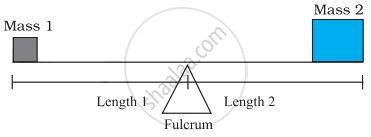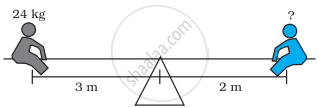Advertisements
Advertisements
प्रश्न
What quantity must be added to each term of the ratio a + b: a - b to make it equal to (a + b)2 : (a - b)2 ?
उत्तर
Let the quantity to be added be x.
Then
`((a + b) + x)/((a - b) + x) = (a + b)^2/(a - b)^2`
⇒ (a + b) (a - b)2 + (a - b)2.x
= (a + b)2 (a - b) + (a + b)2.x
⇒ [(a + b)2 - (a - b)2]x
= (a2 - b2) (a - b) - (a2 - b2) (a + b)
⇒ (4abx) = (a2 - b2) [(a - b) - (a + b)]
⇒ x = `(-2b(a^2 - b^2))/(4ab) = (b^2 - a^2)/(2a)`.
APPEARS IN
संबंधित प्रश्न
If a, b and c are in continued proportion, prove that: a: c = (a2 + b2) : (b2 + c2)
Find the mean proportion of the following :
ab3 and a3b
Find the fourth proportional to 3, 12, 15
If the cost of a dozen soaps is Rs 285.60, what will be the cost of 15 such soaps?
If `x/a = y/b = z/c`, prove that `"ax - by"/((a + b)(x- y)) + "by - cz"/((b + c)(y - z)) + "cz - ax"/((c + a)(z - x)` = 3
If a, b, c are in continued proportion, prove that: a : c = (a2 + b2) : (b2 + c2)
The quarterly school fee in Kendriya Vidyalaya for Class VI is Rs. 540. What will be the fee for seven months?
Determine if the following are in proportion.
4, 6, 8, 12
Write True (T) or False (F) against the following statement:
0.9 : 0.36 : : 10 : 4
Unequal masses will not balance on a fulcrum if they are at equal distance from it; one side will go up and the other side will go down.
Unequal masses will balance when the following proportion is true:
`("mass"1)/("length"2) = ("mass"2)/("length"1)`

Two children can be balanced on a seesaw when
`("mass"1)/("length"2) = ("mass"2)/("length"1)`. The child on the left and child on the right are balanced. What is the mass of the child on the right?

